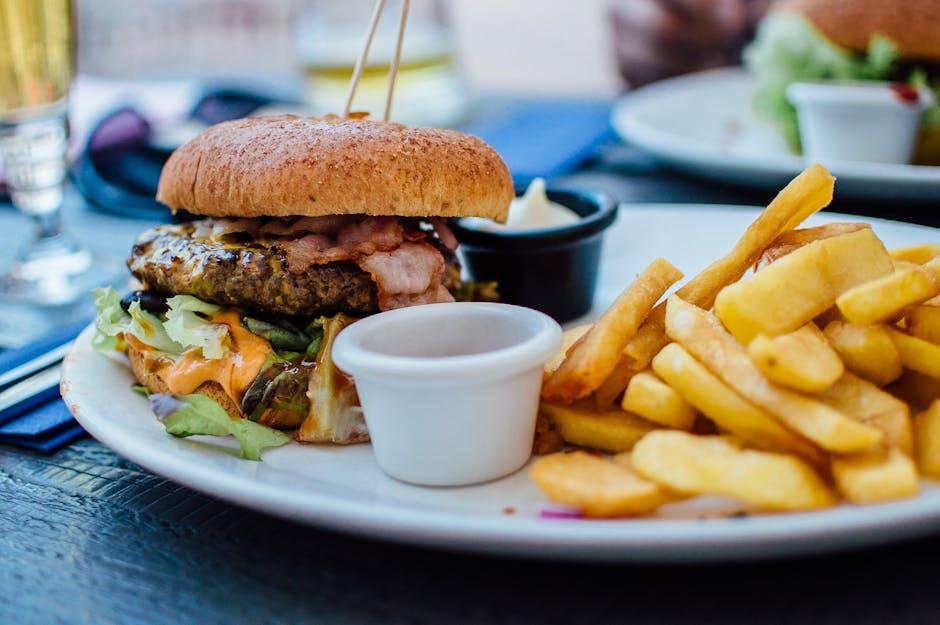In the colorful landscape of personal finance, one key ingredient often overlooked is the concept of food budget percentage. Picture this: a flavorful blend of financial strategy and culinary delight, where every dollar is carefully measured like the perfect pinch of salt. Join us on a journey where we explore how the percentage you allocate to your food budget can be the secret recipe to balancing your financial flavor palette. So, grab a seat at the table, prepare to savor the insights, and let’s dive into the delectable world of food budget percentages.
Table of Contents
- Understanding Food Budget Allocation
- Strategies for Optimizing Food Expenses
- Practical Tips for Setting a Realistic Food Budget
- Maximizing Savings Through Smart Food Shopping
- Q&A
- Wrapping Up


Understanding Food Budget Allocation
When it comes to managing your finances, understanding how to allocate your food budget effectively is essential for maintaining a healthy balance between saving money and enjoying good meals. One popular method is to divide your food budget into specific percentages that cater to different categories, ensuring you make the most of your available resources.
Consider allocating **50%** of your food budget to essentials like fresh produce, grains, and proteins, ensuring you cover your basic nutritional needs. **20%** can go towards indulgent items or dining out to treat yourself occasionally. **Remaining 30%** can be allocated to building a pantry of staple items to create meals from scratch, allowing for flexibility in your cooking while still sticking to a budget.


Strategies for Optimizing Food Expenses
When aiming to cut down on food expenses, it’s essential to strategize wisely to make the most of your budget without compromising on quality or nutrition. One effective approach is to **meal plan** diligently at the start of each week, taking into account sales, discounts, and in-season produce. By creating a detailed shopping list based on your meal plan, you can avoid impulse buying and stick to what you truly need.
Another smart tactic is to **buy in bulk** for items that have a longer shelf life or can be frozen for future use. Purchasing essentials like rice, pasta, or frozen veggies in larger quantities often comes with cost savings per unit. Additionally, considering **store loyalty programs** and **cashback apps** can further help stretch your food budget by providing discounts, coupons, or cashback rewards on your purchases.


Practical Tips for Setting a Realistic Food Budget
When it comes to managing your food budget effectively, there are several practical tips that can help you set realistic financial goals and stay on track. One key strategy is to **plan your meals ahead** of time, creating a weekly menu that aligns with your budget constraints. This approach not only prevents last-minute, expensive meal choices but also reduces food waste significantly.
Another helpful tip is to **make use of loyalty programs and coupons** offered by grocery stores to save money on your purchases. By taking advantage of discounts and special promotions, you can stretch your food budget further without compromising on the quality of the items you buy. Additionally, **buying in bulk for non-perishable items** can be a cost-effective way to stock up on essentials while saving money in the long run.


Maximizing Savings Through Smart Food Shopping
In today’s fast-paced world, making wise choices at the grocery store can significantly impact your overall financial health. **Stretching your food budget to its fullest potential requires a blend of strategy and creativity**. One effective technique is to allocate a specific percentage of your budget towards groceries to help maintain balance and control.
When planning your food budget, consider dividing it into categories such as fresh produce, proteins, pantry staples, and treats. This segmentation can guide your spending habits and ensure you’re getting a well-rounded selection of items. Moreover, keeping track of your expenses through tools like budgeting apps can provide valuable insights into where adjustments can be made to maximize savings.
Table Example:
| Category | Percentage |
|---|---|
| Fresh Produce | 25% |
| Proteins | 30% |
| Pantry Staples | 20% |
| Treats | 10% |
Q&A
Q: What is a food budget percentage, and why is it important?
A: Food budget percentage refers to the proportion of your total income that you allocate towards food expenses. It plays a crucial role in determining your financial health and overall budgeting strategy.
Q: How can I calculate my ideal food budget percentage?
A: To calculate your food budget percentage, divide your total monthly food expenses by your monthly income and multiply the result by 100. Aim to keep this percentage within a reasonable range to ensure financial stability.
Q: What are some tips for optimizing my food budget percentage?
A: Planning meals in advance, buying in bulk, and opting for cost-effective ingredients are effective ways to optimize your food budget percentage. Additionally, avoiding impulse purchases and utilizing leftovers creatively can help maximize your budget.
Q: Can adjusting my food budget percentage impact other areas of my finances?
A: Yes, adjusting your food budget percentage can have a ripple effect on other aspects of your finances. By reducing your food expenses, you may free up funds to allocate towards savings, debt repayment, or other financial goals.
Q: Are there any tools or resources available to help manage my food budget percentage?
A: There are various budgeting apps, meal planning websites, and personal finance blogs that offer tips and tools for managing your food budget percentage. Utilizing these resources can provide valuable insights and support in optimizing your food spending.
Wrapping Up
As your journey to mastering the art of budgeting for food unfolds, remember that the percentage you allocate to sustenance not only nourishes your body but also feeds your financial goals. By striking a balance between flavor and frugality, you pave the way for a more mindful and intentional relationship with your finances. So, as you savor each bite of your budget-friendly meals, may you find empowerment in knowing that every dollar saved is a step closer to financial freedom. Here’s to a deliciously budgeted future! Cheers to smart spending and tasty savings.




0 Comments